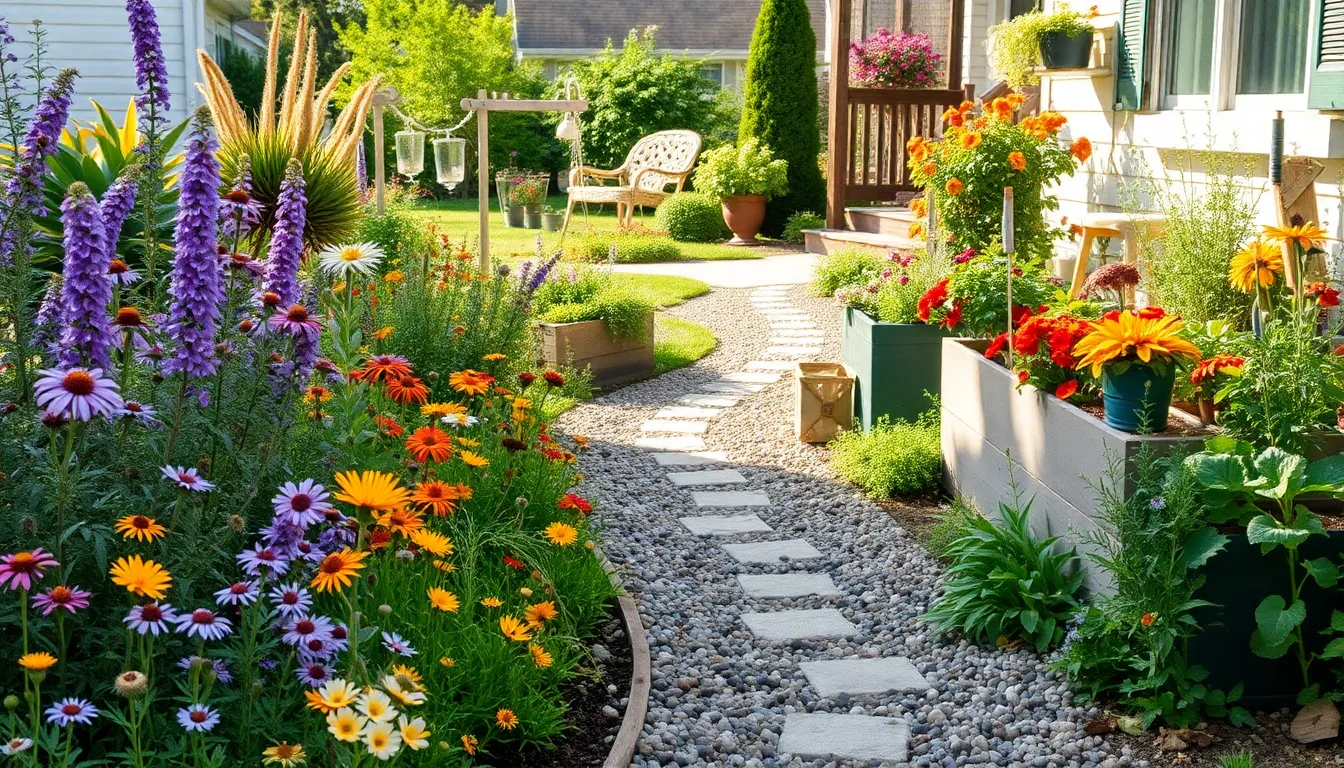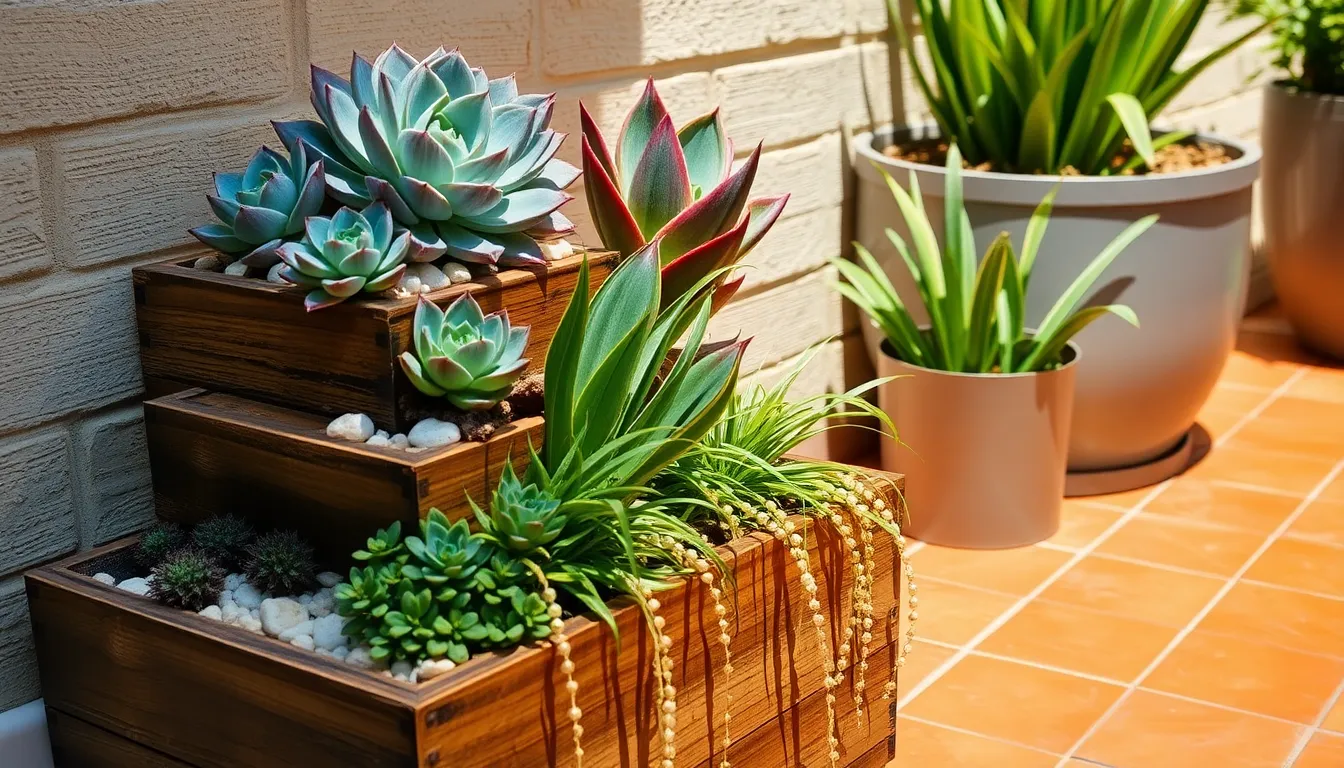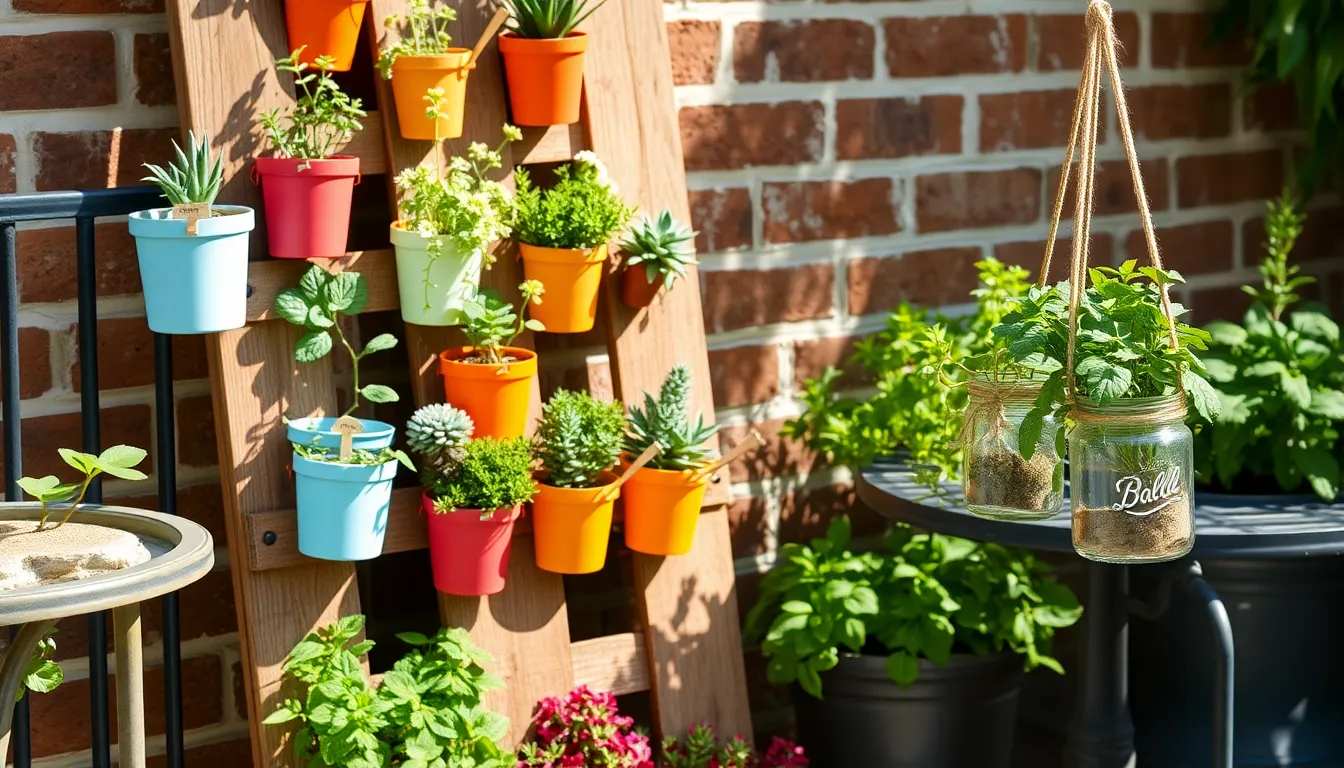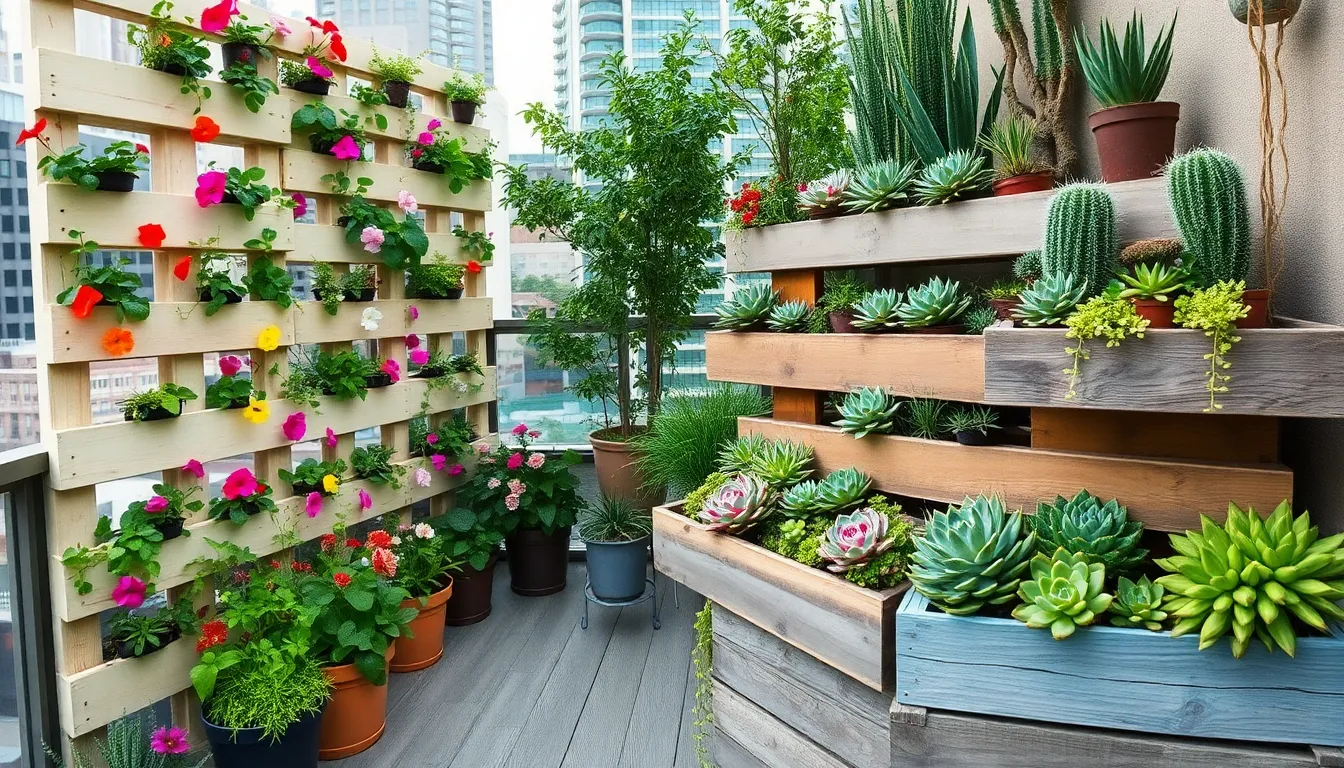Welcome to “12 Innovative Front Yard Landscaping Ideas,” where every gardener—whether just starting out or seasoned with years of experience—can find inspiration to transform their outdoor space into a captivating oasis. This guide is designed to spark joy and creativity in your gardening endeavors, offering fresh ideas that blend beauty with functionality, right in the heart of your front yard.
In this collection, you’ll discover plant selections and design techniques that promise to elevate curb appeal while being practical and easy to maintain. These ideas cater to a range of climates and styles, ensuring you can find the perfect fit for your own unique landscape vision. Imagine stepping outside each day to a vibrant, welcoming garden that reflects your personal style and nurtures your love for nature. With these innovative ideas in your gardening toolkit, you’ll feel empowered and excited to bring your dream landscape to life.
Incorporate Vertical Garden Structures

One effective way to add dimension and greenery to your front yard is by incorporating vertical garden structures. These structures are perfect for small spaces or to create a living wall that adds visual interest and lushness.
Consider using trellises or arbors, which can support climbing plants like clematis or jasmine. These plants thrive in well-draining soil and need full to partial sunlight to flourish, making them ideal for most front yard locations.
For a beginner-friendly option, try installing a vertical garden planter on a wall or fence. Fill it with herbs like basil, thyme, or mint, which enjoy consistent watering and perform well in a sunny spot.
Advanced gardeners might experiment with hydroponic vertical gardens. This method uses a nutrient-rich water solution instead of soil, offering a unique way to grow vegetables and greens efficiently.
Design Curved Pathways with Gravel
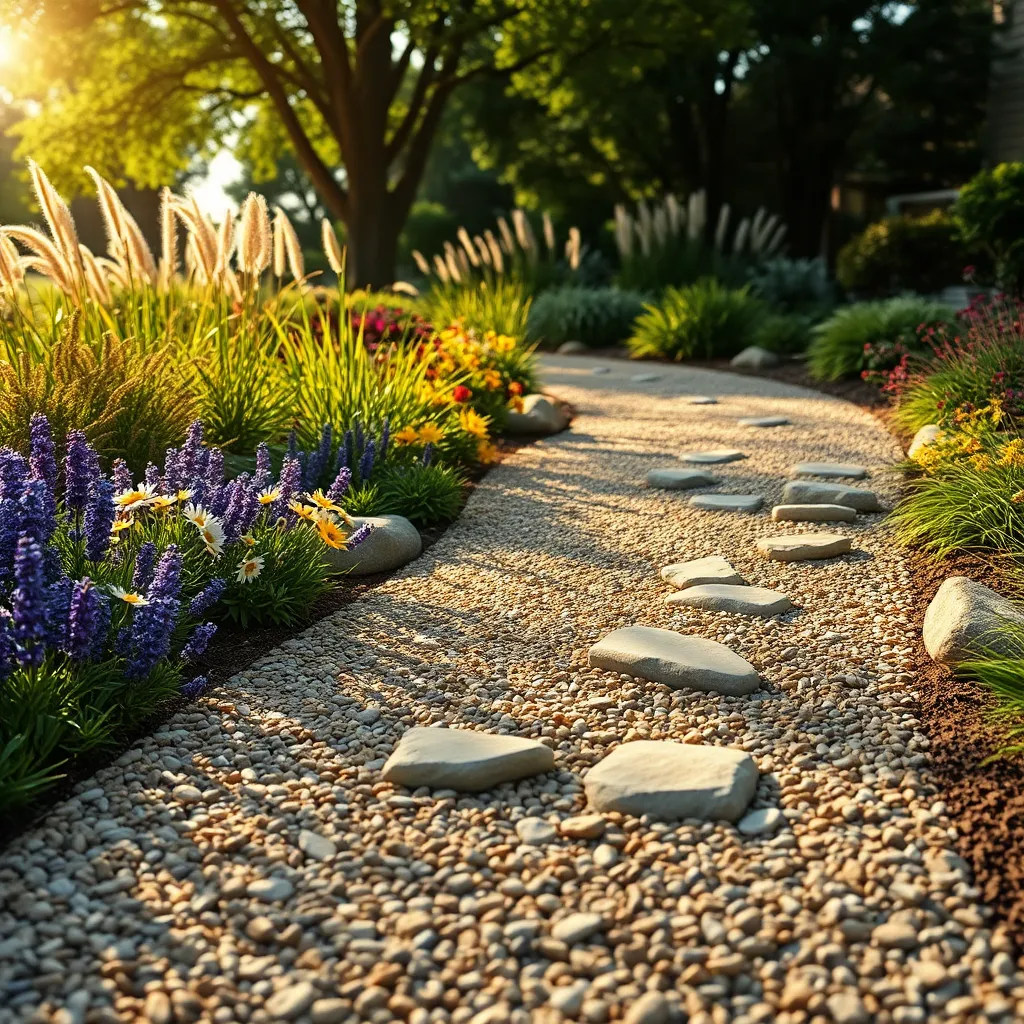
Curved gravel pathways can seamlessly blend with the natural contours of your garden, guiding visitors through a lush landscape. Begin by planning your path using a garden hose or rope to outline the desired curves, ensuring the design complements existing plants and features.
When choosing gravel, opt for a size that provides stability, such as pea gravel or crushed stone, which are both aesthetically pleasing and functional. To prevent weed growth, lay down a permeable landscape fabric before adding a 2-3 inch layer of gravel.
Consider edging your pathway with bricks, stones, or metal to maintain clean lines and prevent gravel from spilling into garden beds. For added interest, plant low-growing ground covers like thyme or chamomile along the pathway’s edges, which will soften the look and provide fragrant scents underfoot.
Watering the path occasionally can help settle the gravel and keep dust down, especially during dry periods. If you live in an area prone to heavy rainfall, ensure proper drainage by slightly sloping the path to direct water away from your home’s foundation.
Plant Native Pollinator-Friendly Flowers
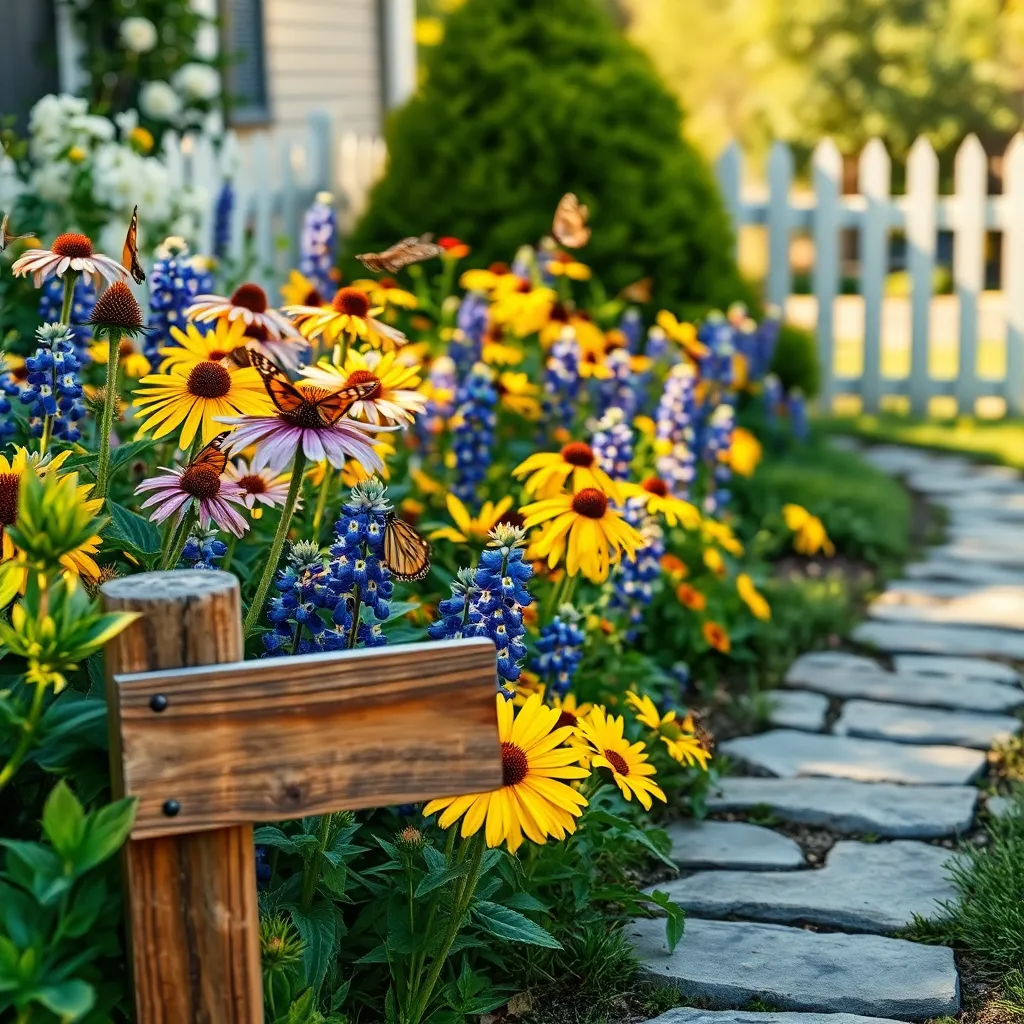
Transforming your front yard into a haven for native pollinators begins with selecting flowers that thrive in your local ecosystem. Opt for native plants like coneflowers, bee balm, and black-eyed Susans, which naturally attract bees, butterflies, and other pollinators.
Consider the growing conditions of your front yard before planting. Most native pollinator-friendly flowers prefer well-drained soil and full sun, so ensure your chosen location meets these requirements.
Watering is crucial, especially during the establishment phase. Water new plants regularly for the first few weeks, ensuring the soil remains slightly moist but not waterlogged.
For advanced gardeners, consider implementing a succession planting strategy. By selecting flowers with staggered blooming periods, you can provide a continuous food source for pollinators throughout the growing season.
Install Low-Maintenance Ground Covers
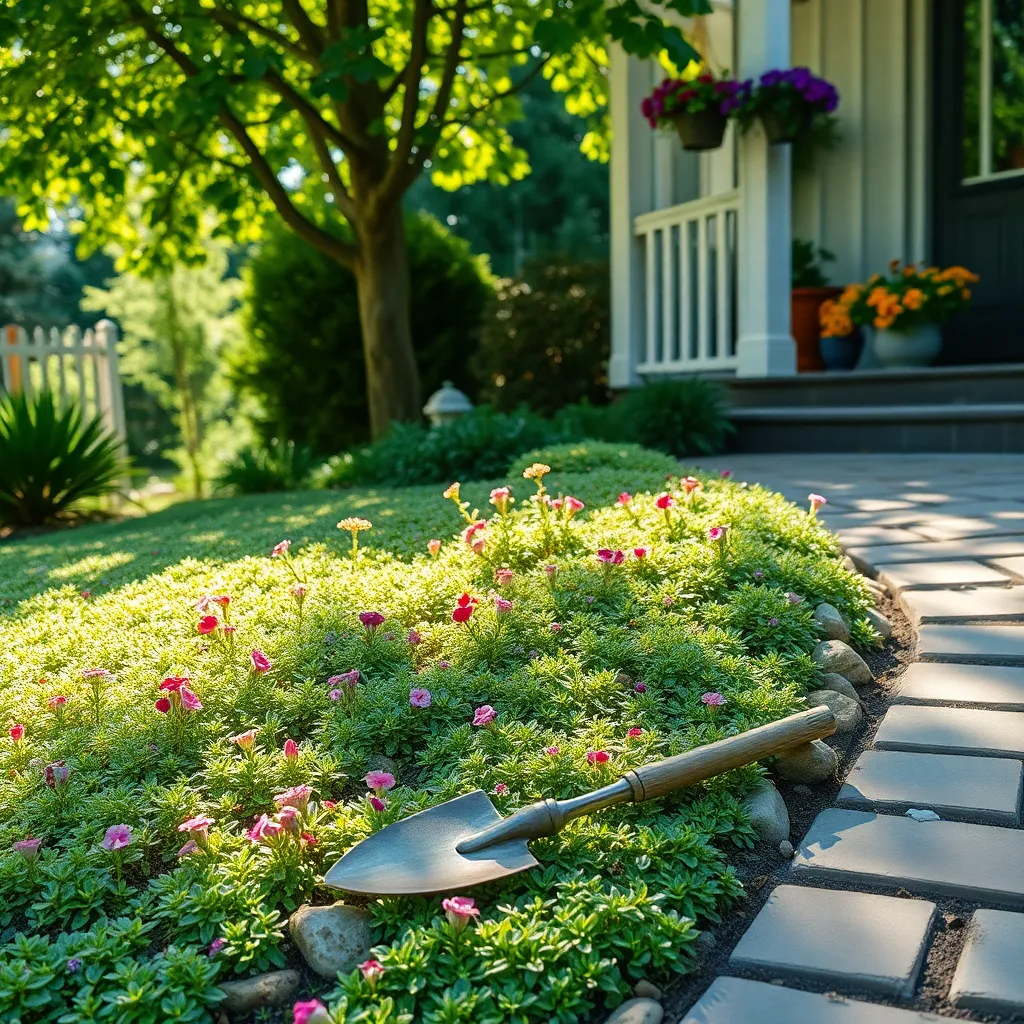
Transforming your front yard with low-maintenance ground covers can create a lush, inviting landscape with minimal effort. These plants are perfect for busy gardeners who want vibrant greenery without the hassle of constant upkeep.
Consider using ground covers like creeping thyme, which thrives in well-drained soil and sunny spots. It’s a drought-tolerant option that requires watering only once a week in hot climates, making it ideal for those looking to conserve water.
Another excellent choice is sedum, known for its ability to grow in poor soil conditions and resist pests. For optimal results, plant sedum in a location with full sun exposure and water it sparingly, allowing the soil to dry out completely between waterings.
For shaded areas, try using pachysandra, which can create a dense, green carpet under trees or beside buildings. This plant prefers rich, well-drained soil and benefits from a layer of mulch to retain moisture and suppress weeds, ensuring it stays healthy with minimal intervention.
Use Multi-Layered Planting Zones
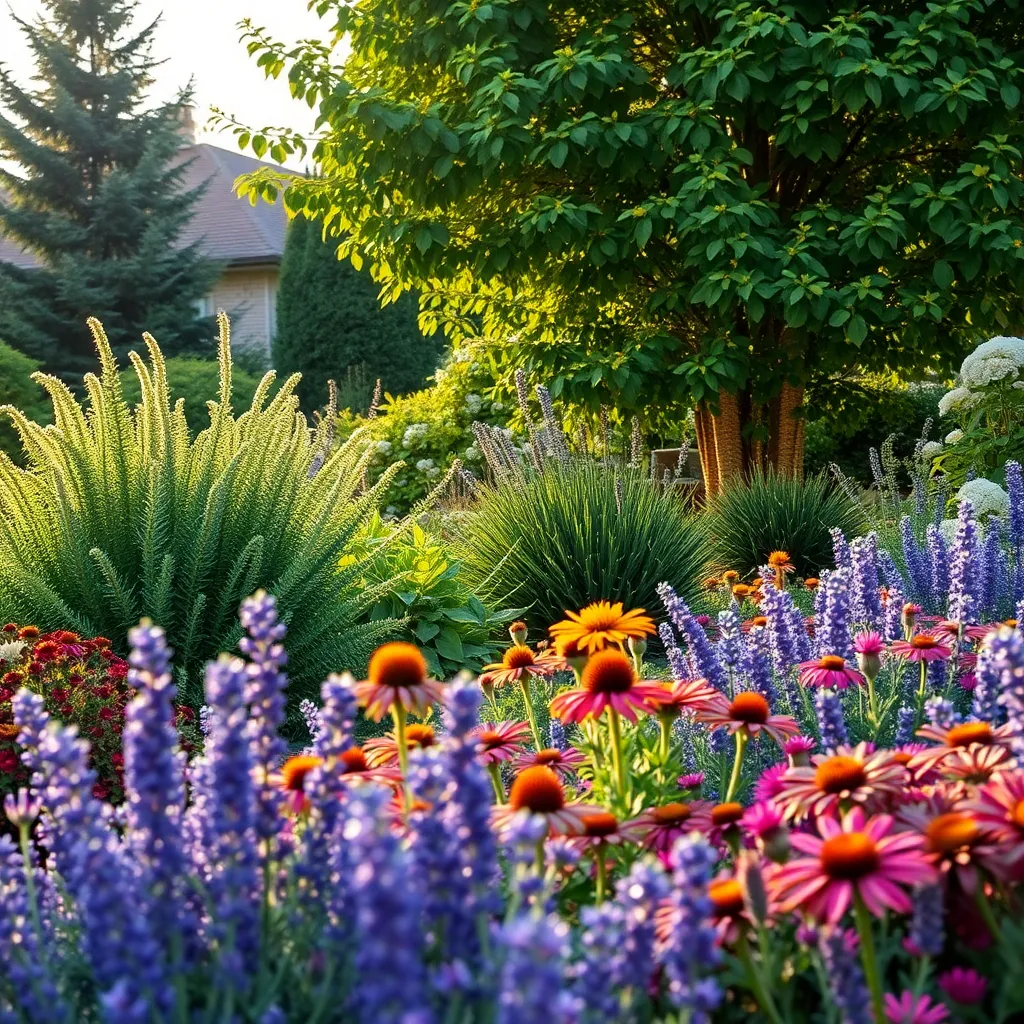
Creating multi-layered planting zones in your front yard can add depth and visual interest while maximizing space. Begin by selecting a variety of plants with different heights, textures, and colors to create a dynamic and layered effect.
Start with taller plants or small trees at the back or center of your planting zone, providing a natural backdrop. Consider using plants like ornamental grasses, which are low-maintenance and offer movement and softness to your landscape.
In front of these tall plants, add a layer of medium-height shrubs or flowering perennials. Choose species that thrive in your local climate and soil conditions, such as lavender or hydrangeas, to ensure they flourish without excessive care.
Finish with a layer of low-growing plants near the edges of your planting zones. Opt for ground covers like creeping thyme or ajuga, which not only fill gaps but also suppress weeds and reduce soil erosion.
For an advanced approach, experiment with companion planting to enhance growth and deter pests. Pair plants with complementary needs, ensuring each layer receives appropriate sunlight and water, and watch your garden thrive with minimal intervention.
Create a Zen Rock Garden Area
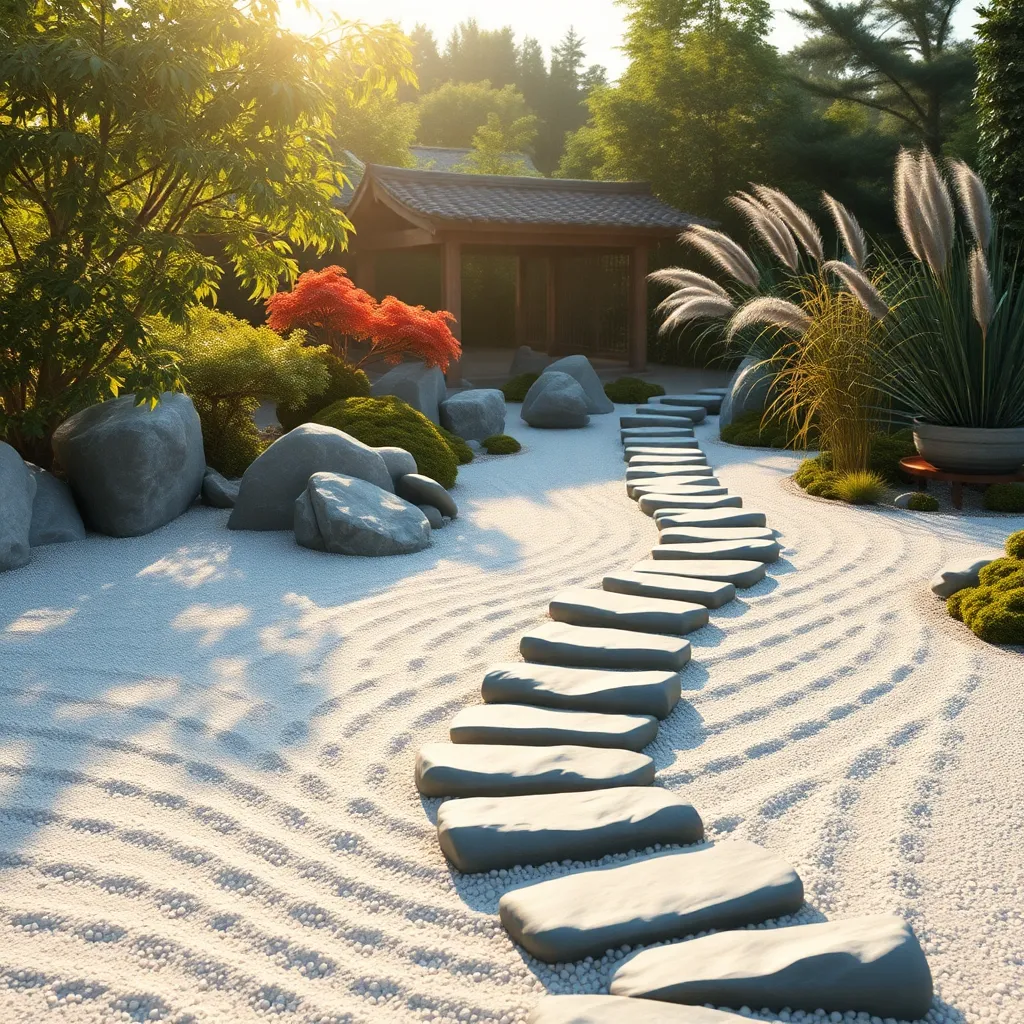
Transforming a section of your front yard into a Zen rock garden can create a serene and inviting space. To start, select a level area and clear it of any existing plants and debris to ensure a clean slate.
Choose a variety of rocks and stones in different shapes and sizes to add interest and texture. Arrange them thoughtfully to mimic natural landscapes, keeping balance and harmony in mind.
Once your rocks are in place, consider adding sand or gravel to define pathways or open areas. Rake the sand into patterns, such as swirling designs or straight lines, to evoke a sense of movement and tranquility.
Add low-maintenance plants like moss or ornamental grasses to introduce a touch of greenery. These plants thrive in well-drained soil and require minimal watering, making them ideal for a Zen garden setting.
Build a DIY Water Feature
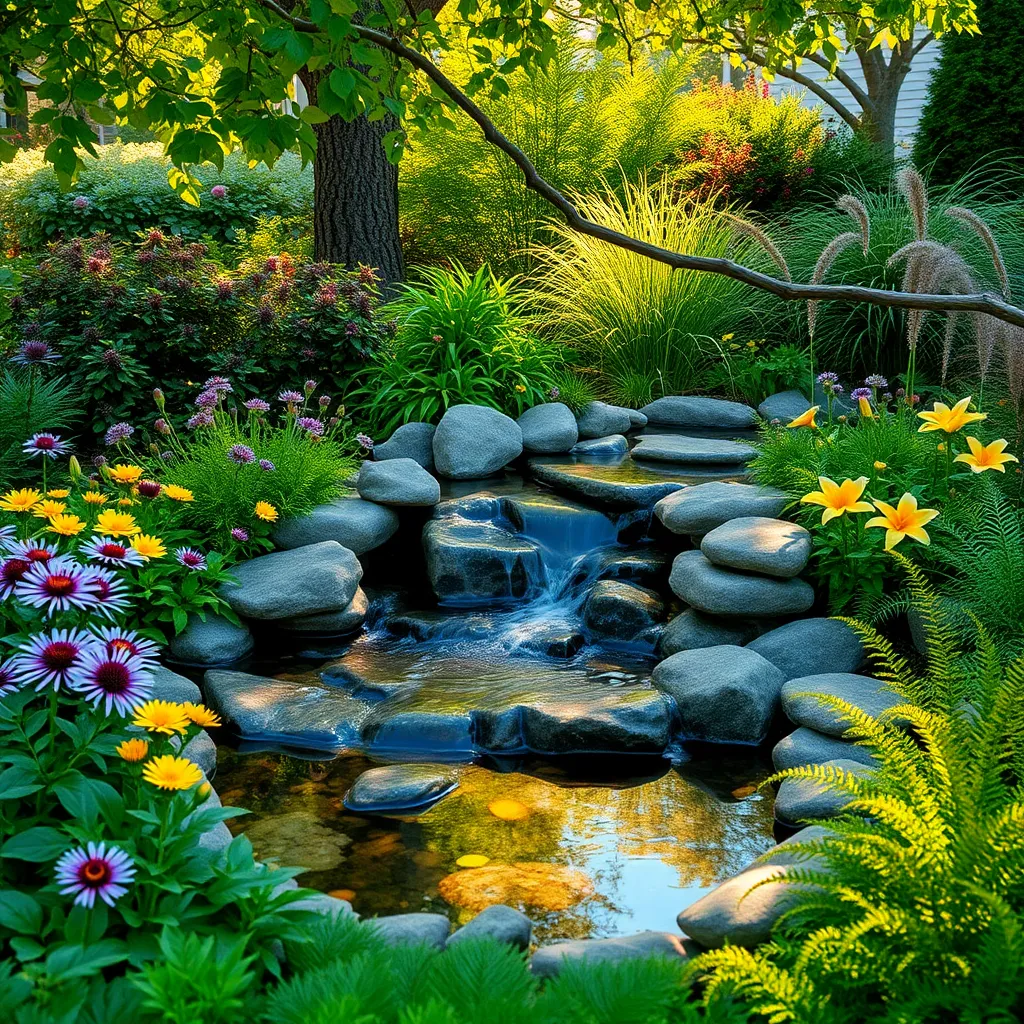
Transforming your front yard with a DIY water feature can be a rewarding project that adds serenity and movement to your landscape. Begin by selecting a location that is easily visible and has access to a power source for the pump.
Consider using a pre-formed pond liner or create a more natural look with flexible pond liner material. For a simple installation, dig a hole and place the liner, ensuring it is level and free of sharp rocks that could puncture it.
Choose a pump that suits the size of your water feature; a smaller pump works well for gentle bubbling, while larger pumps create more dramatic effects. Install the pump according to the manufacturer’s instructions, ensuring it is submerged and connected to a power source.
Incorporate plants like water lilies or irises around the edge of your water feature to blend it seamlessly into the landscape. These plants thrive in moist conditions and will add both color and texture to your water garden.
Add Solar-Powered Garden Lighting
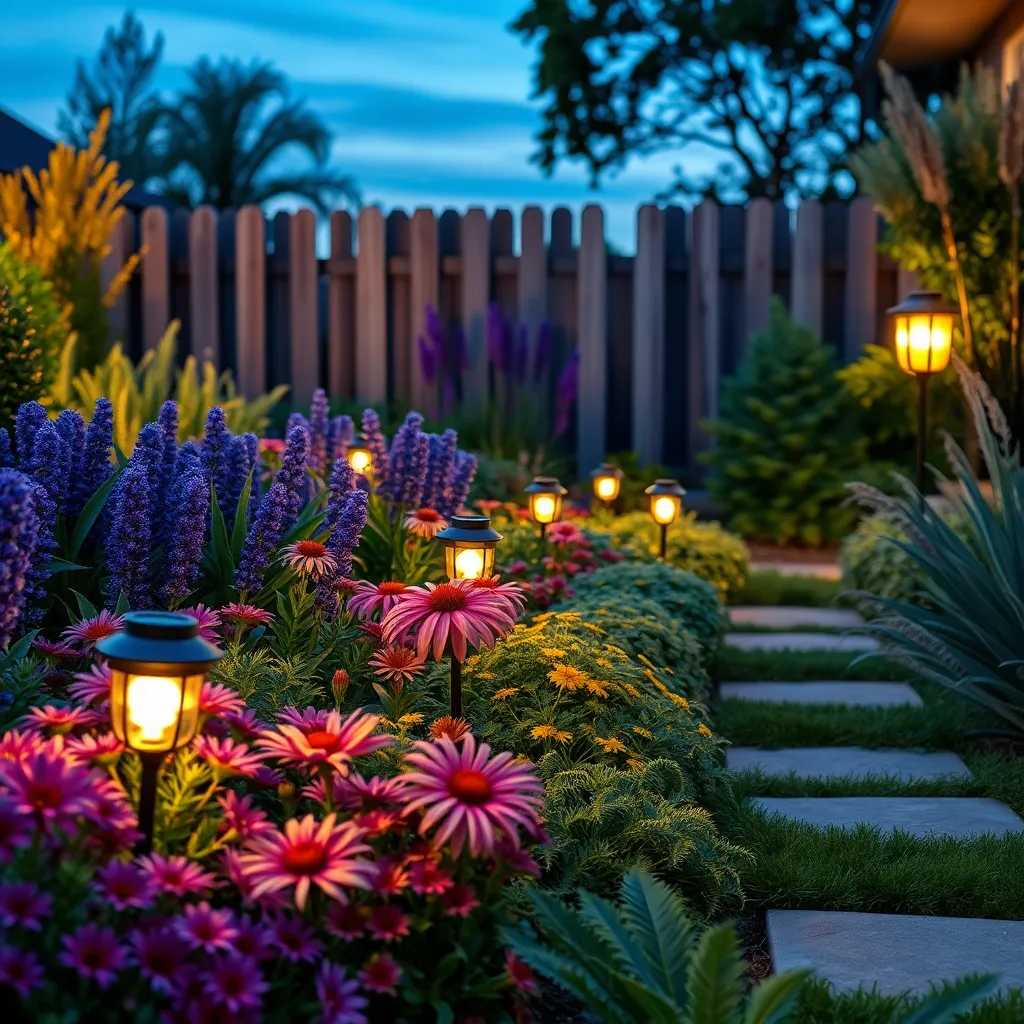
Bringing solar-powered garden lighting into your front yard can beautifully highlight your landscape while being environmentally friendly. These lights are easy to install, requiring no wiring, and can be strategically placed to accentuate pathways, flower beds, or garden features.
Start by identifying areas in your garden that would benefit from enhanced visibility or mood lighting during the evening. Consider installing lights near your favorite plants to create stunning nighttime silhouettes and add depth to your garden’s appearance.
To maximize the effectiveness of solar lights, position them in spots that receive ample sunlight during the day. This ensures they charge fully, providing bright illumination from dusk till dawn.
For those who enjoy a touch of creativity, explore solar lights with adjustable brightness or color settings. This feature allows you to customize your garden’s ambiance, adapting it for different occasions or seasonal displays.
Integrate Edible Landscaping Elements
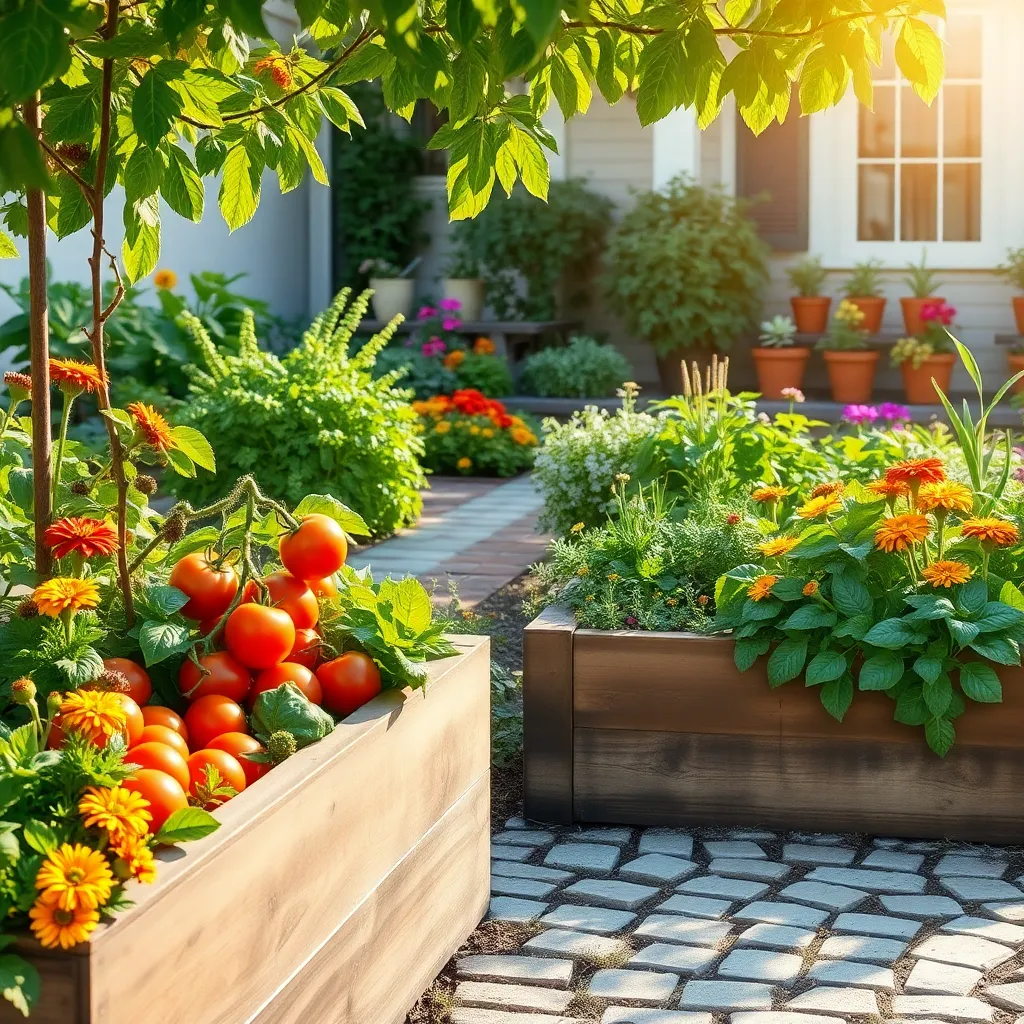
Transform your front yard into a productive and beautiful space by integrating edible landscaping elements. This approach combines aesthetic appeal with practical benefits, allowing you to enjoy fresh produce right from your doorstep.
Consider incorporating plants like blueberries, dwarf apple trees, and herbs into your design. These options not only provide delicious harvests but also contribute to the visual interest with their foliage and blooms.
To ensure success with edible plants, pay attention to site selection and soil preparation. Most fruit-bearing plants require full sun, so choose a spot that receives at least six hours of sunlight daily, and amend the soil with organic matter to improve drainage and fertility.
Regular maintenance is key to thriving edible landscapes. Water deeply once a week, ensuring the soil remains moist but not waterlogged, and mulch around plants to retain moisture and suppress weeds.
For those ready to take it a step further, experiment with companion planting techniques. Pairing plants like marigolds with tomatoes can naturally deter pests and enhance growth, adding another layer of sustainability to your edible landscape.
Utilize Ornamental Grasses for Texture
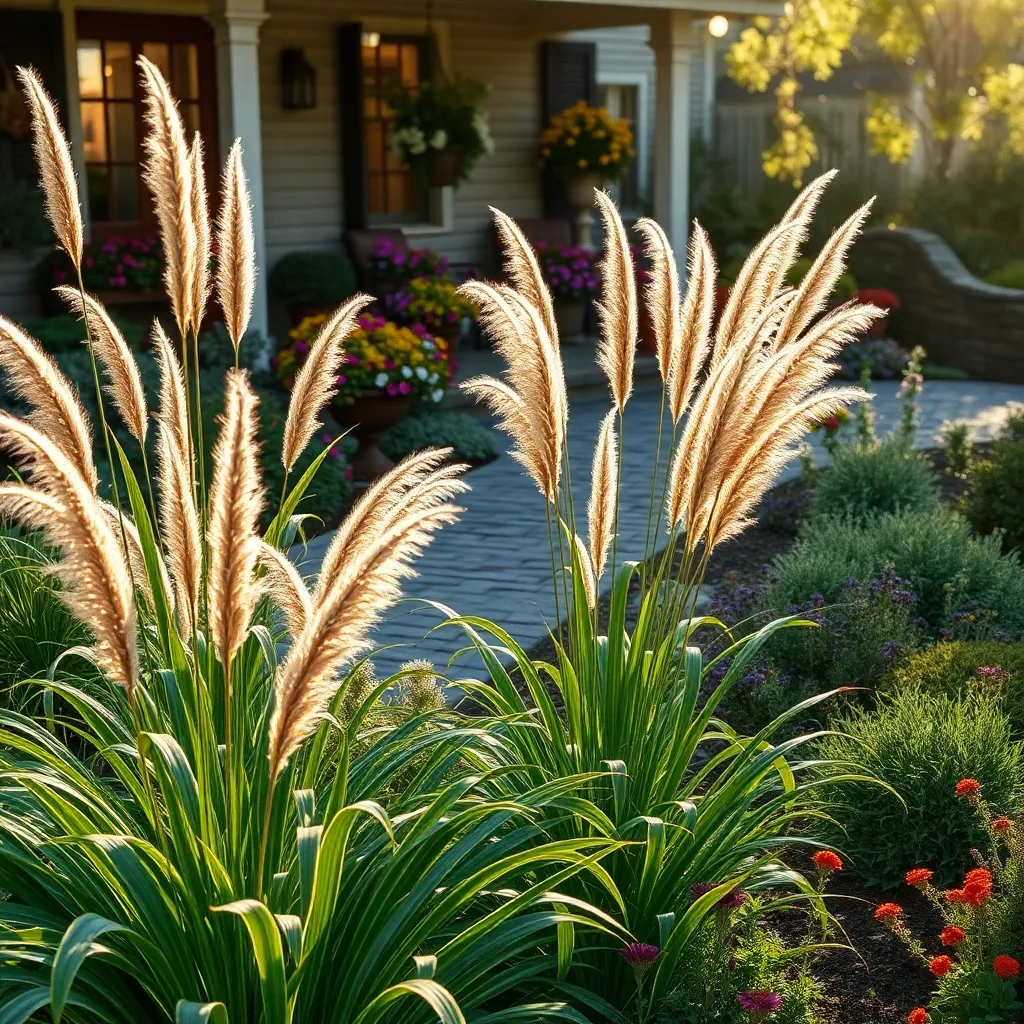
Ornamental grasses bring a dynamic texture to your front yard, creating a landscape that feels alive and vibrant. These grasses are low-maintenance, offering year-round interest with minimal effort, making them an excellent choice for both beginner and seasoned gardeners.
Choosing the right ornamental grass depends on your specific climate and soil conditions. For sunny locations with well-drained soil, try planting Miscanthus or Fountain Grass, which thrive in these environments.
It’s important to plant ornamental grasses in early spring or fall to give them a strong start. Ensure they receive adequate water during establishment, but once settled, most varieties are drought-tolerant, requiring less frequent watering.
Incorporate a variety of heights and colors to create a layered effect, adding depth to your landscape design. Mix taller varieties like Switchgrass with shorter ones like Blue Fescue for a visually appealing contrast that enhances your front yard’s texture.
Select Drought-Resistant Plant Varieties
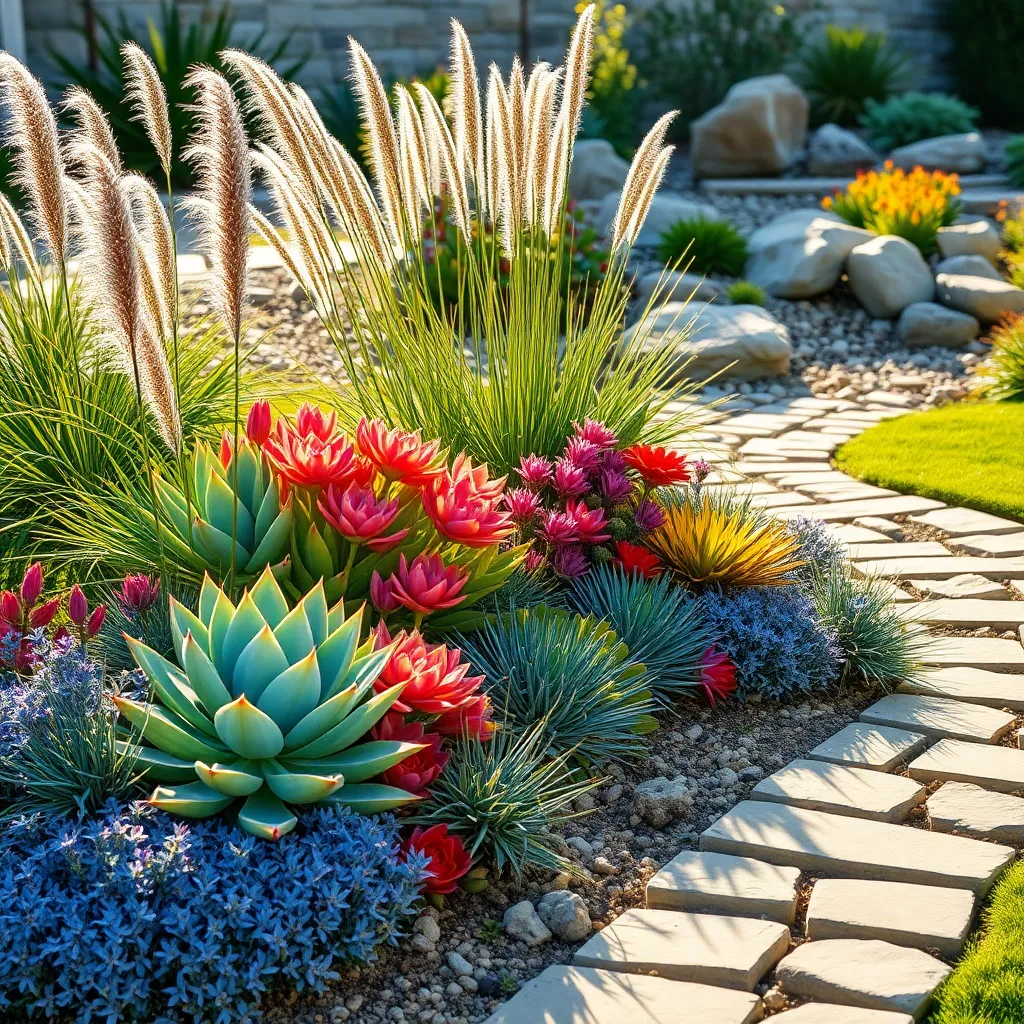
Incorporating drought-resistant plants into your front yard is a smart and sustainable choice. These plants not only reduce water usage but also thrive in challenging conditions, providing beauty even during dry spells.
Start by selecting plants that are naturally adapted to arid environments, such as succulents and cacti. These plants require well-draining soil, so consider mixing sand with your garden soil to improve drainage.
Another excellent choice is lavender, which adds a touch of fragrance and color to your landscape. Plant lavender in a sunny spot and water it sparingly, allowing the soil to dry out between waterings for optimal growth.
For a touch of color and resilience, consider adding yarrow to your garden. This hardy perennial thrives in full sun and poor soil, requiring minimal watering once established.
When planting drought-resistant varieties, it’s crucial to group them together based on their watering needs. This practice, known as xeriscaping, not only conserves water but also ensures that each plant receives the care it requires.
Position Evergreen Shrubs for Privacy
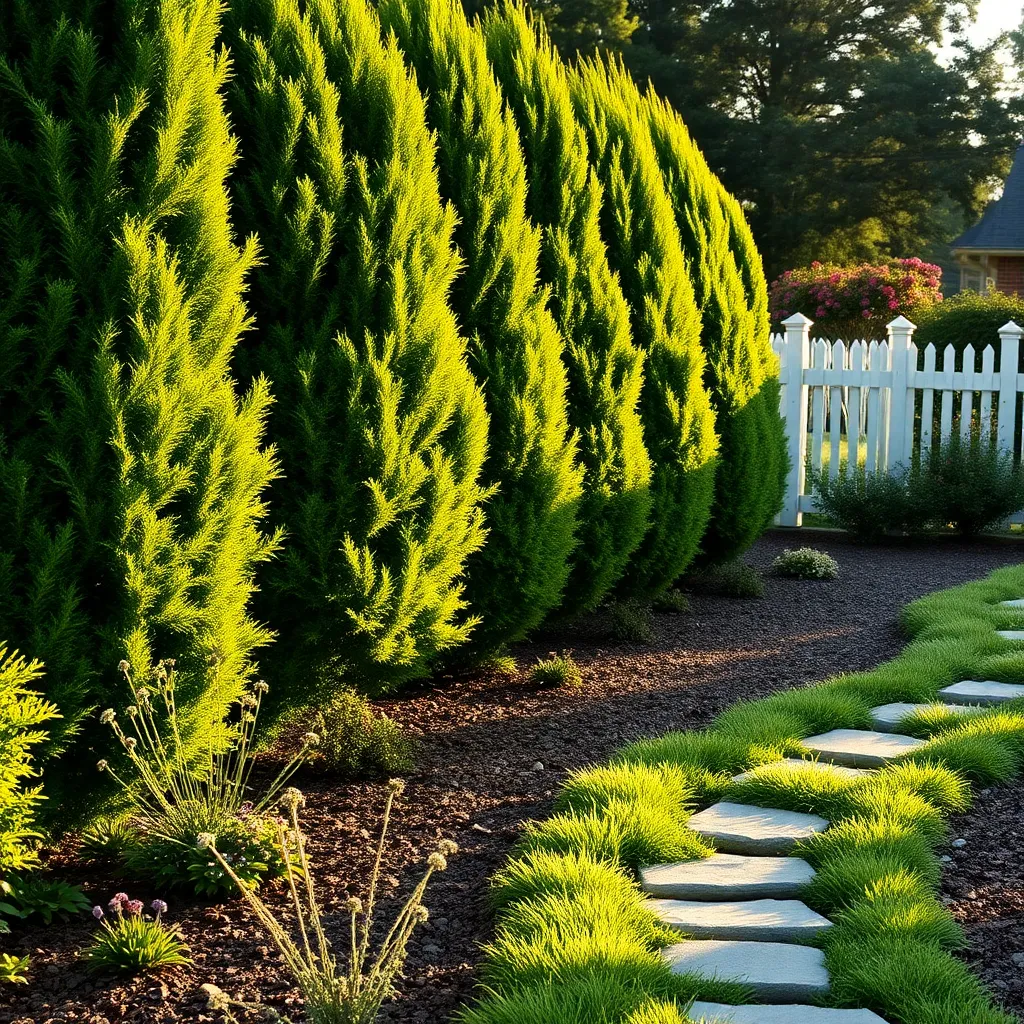
Evergreen shrubs are an excellent choice for creating privacy in your front yard, offering year-round foliage and a natural barrier. To achieve the best results, position these shrubs strategically along property lines or areas where privacy is most desired.
Consider the mature size of the shrubs when planting to ensure they do not overcrowd the space. It’s essential to maintain a distance of at least three to four feet between each plant to allow for adequate growth and air circulation.
Soil preparation is crucial for healthy evergreen shrubs; they thrive in well-drained, slightly acidic soil. Adding organic matter such as compost can improve soil quality and provide the necessary nutrients for robust growth.
Regular watering is vital, especially during the first few years as the shrubs establish their root systems. Aim to water deeply once a week, adjusting for rainfall and seasonal changes to prevent overwatering.
- Prune annually to maintain shape and encourage dense foliage.
- Mulch around the base to retain moisture and suppress weeds.
- For added privacy, stagger the planting pattern rather than aligning shrubs in a straight row.
Advanced gardeners might explore layering different heights of evergreens for a more dynamic look. This technique not only enhances privacy but also adds depth and interest to your landscaping design.
Conclusion: Growing Success with These Plants
As you embark on enhancing your front yard, remember that each design choice mirrors essential relationship concepts: embrace diversity with assorted plant life, nurture growth through regular care, create harmony with balanced compositions, and foster unity by incorporating communal spaces. Celebrate individuality with unique features, build resilience with perennial choices, and prioritize sustainability through eco-friendly practices. Cultivate trust by maintaining consistent upkeep, express affection with vibrant colors, inspire joy with whimsical elements, show patience as plants mature, and honor legacy by integrating timeless designs.
To bring these concepts to life, consider choosing one idea to implement in your yard this weekend. Whether it’s planting a new shrub or adding a cozy seating area, small steps can lead to significant transformations in your garden and relationships alike.
Bookmark this article to revisit these strategies as you continue to cultivate both your yard and personal connections. By nurturing these foundational elements, you’re setting the stage for flourishing relationships that withstand the test of time. Embrace this journey with confidence, knowing that with each thoughtful gesture, you’re investing in a future of abundant relationship success and joy.

